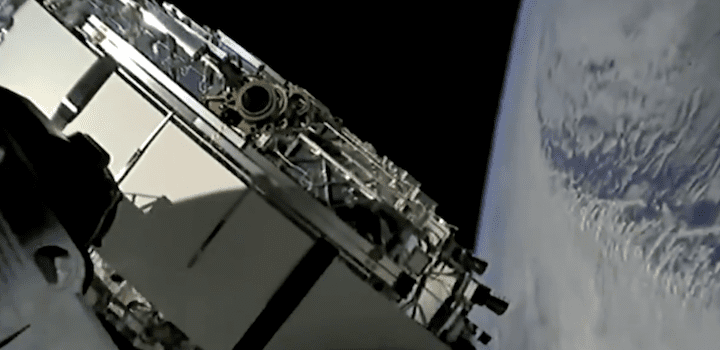Latest News

60 Starlink satellites are deployed on Feb. 15 SpaceX launch. Screenshot via SpaceX
SpaceX deployed another round of Starlink satellites late Monday, but ended its streak of Falcon 9 booster recoveries.
The Falcon 9 rocket took off on Feb. 15 from Launch Complex 40 at Cape Canaveral Space Force Station in Florida at 10:59 ET, carrying 60 Starlink satellites. After stage separation, the first stage failed to land on a drone ship in the Atlantic Ocean, breaking a streak of 24 consecutive Falcon 9 booster landings.
The set of 60 Starlink satellites were deployed about an hour and five minutes into the mission. SpaceX has set out on a rapid clip of launches for Starlink, it’s constellation of satellites in Low-Earth Orbit (LEO) to deliver broadband internet service. This was the company’s fifth launch of 2021, and the fourth launch carrying Starlink satellites, after Starlink missions on Feb. 4 and Jan. 20, and the Transporter-1 rideshare mission that launched 10 Starlink satellites to Polar Orbit.
The company is targeting near-global coverage of the populated world this year. Beta testing is underway in parts of the United States, Canada, and the United Kingdom, and SpaceX is now accepting preorders for Starlink service with a $99 deposit. More than 10,000 users in the U.S. and abroad are using the service today, Starlink Services LLC, SpaceX’s subsidiary for Starlink, reported in a recent FCC filing.
Last week, SpaceX Founder Elon Musk confirmed future plans to take Starlink public once the business’s cash flow can be predicted, and detailed the financial challenge ahead for Starlink.
“SpaceX needs to pass through a deep chasm of negative cash flow over the next year or so to make Starlink financially viable. Every new satellite constellation in history has gone bankrupt. We hope to be the first that does not,” Musk tweeted on Feb. 9. “Starlink is a staggeringly difficult technical and economic endeavor. However, if we don’t fail, the cost to end users will improve every year.”
Get the latest Via Satellite news!
Subscribe Now